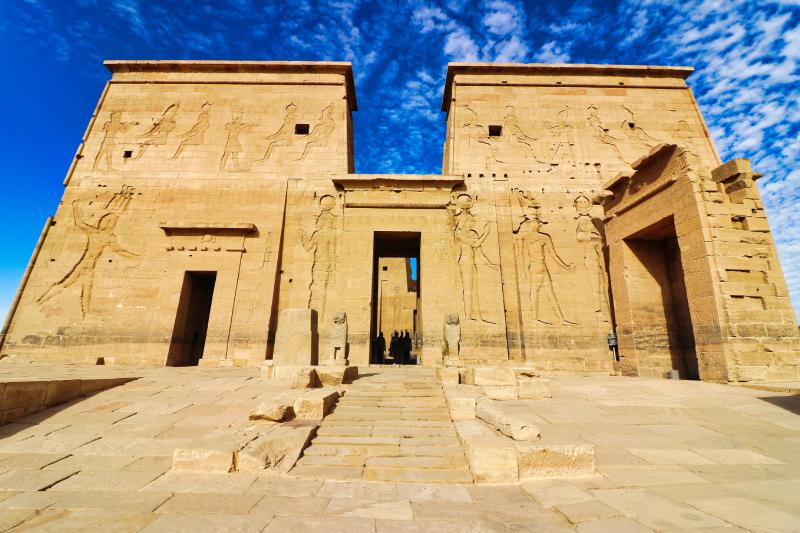
Nestled in the tranquil waters of the Nile River, the Temple of Philae stands as a testament to ancient Egyptian civilization's architectural prowess and spiritual devotion. Often regarded as one of the most enchanting temples of Egypt, it captures the imagination of every visitor with its rich history and stunning artistry.
The Temple of Philae is more than just an architectural wonder; it's a symbol of the cultural and religious amalgamation that characterized ancient Egypt. Constructed over several centuries, it vividly reflects the influences of various rulers and the enduring legacy of Egyptian mythology. As we delve deeper into its historical context, you will discover how this temple has played a pivotal role in shaping the religious landscape of the region.
The Temple of Philae is situated in southern Egypt, near the city of Aswan, on an island in the reservoir of the Aswan Low Dam. Originally, the temple complex was located on Philae Island, but due to the construction of the Aswan High Dam, it was relocated to nearby Agilkia Island. The new location was carefully chosen to preserve the temple from submersion and to maintain its accessibility to visitors.
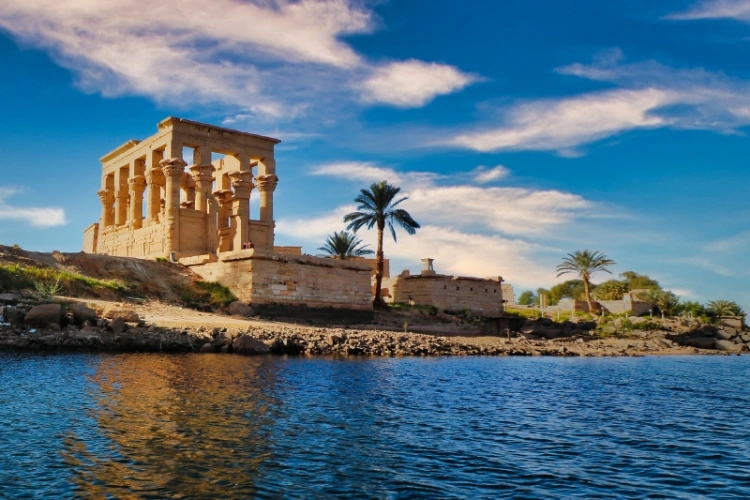
The Temple of Philae holds immense historical significance as it was one of the last strongholds of ancient Egyptian religion and culture. Dedicated primarily to the goddess Isis, it served as a focal point for worship and pilgrimage, attracting devotees from far and wide. The temple's construction began during the Ptolemaic Period and continued through the Roman Period, making it a vivid tapestry of cultural and artistic influences.
The Temple of Philae played a vital role in preserving Egyptian religious traditions even as Christianity spread across Egypt. It remained a center of pagan worship until the 6th century AD, when Emperor Justinian ordered its closure, marking the end of ancient Egyptian religion. This shift is reflected in the temple’s inscriptions, offering insight into a pivotal historical transition. The temple is also deeply tied to the myth of Osiris and Isis,where Isis resurrects Osiris,symbolizing life, rebirth, and fertility. These stories, carved into its walls, continue to fascinate scholars and visitors, preserving Philae's legacy.
The architectural splendor of the Temple of Philae is a marvel to behold. Its design is a harmonious blend of Egyptian and Greco-Roman influences, evident in its towering columns, intricate carvings, and expansive courtyards. As we explore the temple, we'll encounter a variety of architectural features that exemplify the artistry and innovation of ancient builders.
The Temple of Philae is renowned for its stunning architecture, especially the majestic First Pylon, adorned with colossal reliefs of pharaohs and gods. This grand entrance leads to courtyards and sanctuaries, culminating in the awe-inspiring Hypostyle Hall with its forest of ornate columns. The temple’s exquisite reliefs and inscriptions offer rich insights into ancient Egyptian rituals, myths, and daily life. The exceptional craftsmanship reflects the artisans' skill and devotion. Together, these elements form a timeless monument that continues to captivate and inspire visitors from around the world.

The Temple of Philae played a crucial role in the religious life of ancient Egypt. As a center of worship dedicated to the goddess Isis, it was a pilgrimage destination for devotees seeking her blessings and guidance. Isis, revered as the mother of the gods and a symbol of fertility and protection, was a central figure in Egyptian mythology, and the temple served as a testament to her enduring influence.
Rituals at the Temple of Philae were central to ancient Egyptian religious life. Priests and priestesses performed daily rites and sacrifices, while grand festivals honoring Osiris and Isis drew crowds and reinforced communal beliefs. Beyond its spiritual role, the temple also served as a center of learning and political influence. Religious texts were transcribed there, and priests engaged in theological debate and regional administration. Through its religious, educational, and political functions, the Temple of Philae became a vital part of the cultural and spiritual fabric of ancient Egypt.
Visiting the Temple of Philae is an experience like no other, offering a unique blend of history, culture, and natural beauty. As you step onto the island, you'll be greeted by the sight of the temple's majestic pylons rising against the backdrop of the Nile's shimmering waters. The serene atmosphere and the gentle rustling of the palm trees create a sense of tranquility, setting the stage for an unforgettable exploration of this ancient wonder. Many Egypt tours include this iconic site, allowing travelers to fully appreciate its timeless charm.
Upon entering the temple complex, you'll find a wealth of historical and artistic treasures to discover. Take your time to explore the various chambers and courtyards, each with its own unique story to tell. The intricate carvings and hieroglyphs adorning the walls offer fascinating insights into the beliefs and practices of ancient Egyptians. Be sure to visit the Sanctuary of Isis, the heart of the temple, where the goddess was worshipped with great devotion.
Guided tours are available for those seeking a deeper understanding of the temple's history and significance. Knowledgeable guides provide valuable context and anecdotes, bringing the temple's rich past to life. For a truly magical experience, consider visiting during the Sound and Light Show, where the temple is illuminated with colorful lights and narrated stories, transporting you back in time to the days of the pharaohs.
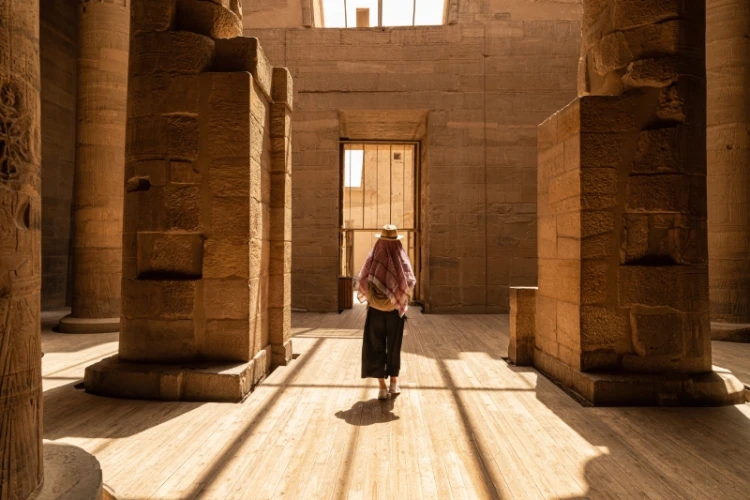
The best time to visit the Temple of Philae is during the cooler months, from October to April, when the weather is mild and pleasant. During this period, daytime temperatures are comfortable, making it ideal for exploring the temple complex and other nearby attractions. The cooler climate also allows for longer visits, enabling you to fully immerse yourself in the temple's history and beauty.
Visiting the Temple of Philae early in the morning or late afternoon is ideal to avoid heat and crowds, offering a peaceful atmosphere to admire its intricate details. The soft light at sunrise or sunset enhances its beauty and provides stunning photo opportunities. For a unique experience, the evening Sound and Light Show brings the temple's history to life with captivating narration and lighting effects. Whether by day or night, a visit to Philae offers an unforgettable glimpse into Egypt’s rich past.
The Temple of Philae is steeped in fascinating history and lore, making it a treasure trove of interesting facts. Here are a few intriguing tidbits that highlight the temple's unique attributes and cultural significance:
1. Last Pagan Temple: The Temple of Philae was one of the last active pagan temples in Egypt. It continued to function as a center of worship until the 6th century AD, long after Christianity had become the dominant religion in the region.
2. Isis and the Nile: The temple's connection to the goddess Isis is deeply intertwined with the Nile River. According to mythology, the tears of Isis caused the annual flooding of the Nile, which was essential for agriculture and sustenance in ancient Egypt.
3. Hieroglyphic Graffiti: The temple walls contain a wealth of hieroglyphic inscriptions, some of which are considered graffiti left by ancient visitors. These inscriptions provide valuable insights into the thoughts and expressions of those who once visited the sacred site.
4. Multi-Religious Influence: Over the centuries, the temple has witnessed a blend of religious influences, from ancient Egyptian to Greco-Roman and Christian. This amalgamation is reflected in the diverse architectural styles and motifs found throughout the complex.
5. UNESCO World Heritage Site: The Temple of Philae is part of the Nubian Monuments from Abu Simbel to Philae, a UNESCO World Heritage Site. This designation underscores its global cultural and historical significance, ensuring its preservation for future generations.
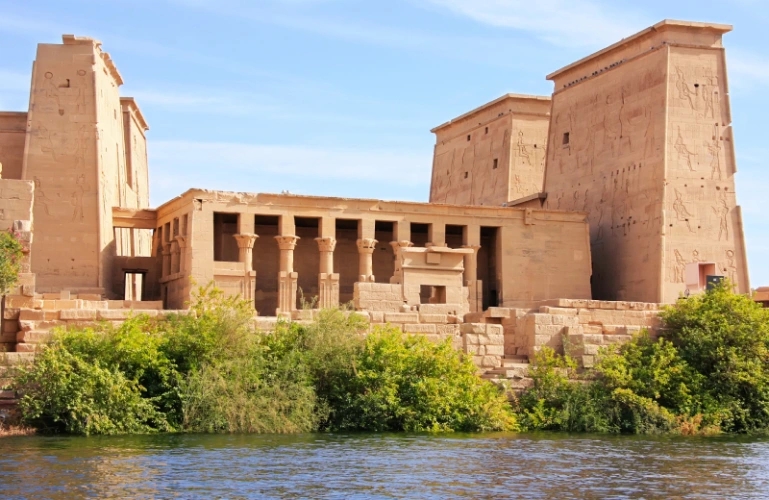
The Temple of Philae is a testament to the enduring legacy of ancient Egyptian civilization, offering a window into a world of myth, mystery, and majesty. Its rich history, architectural splendor, and cultural significance make it a must-visit destination for anyone interested in exploring the wonders of Egypt. As we've journeyed through its storied past and marveled at its artistic achievements, we've gained a deeper appreciation for the temple's place in the tapestry of human history.
Whether it’s the history, architecture, or spiritual aura that draws you in, the Temple of Philae offers a truly unforgettable experience. As you explore its majestic ruins, you'll feel the magic of ancient Egypt come alive.
Q1. Where is the Temple of Philae located?
The temple is located on Agilkia Island in the Nile River near Aswan, Egypt. It was relocated there from its original site on Philae Island due to flooding from the Aswan High Dam.
Q2. How do I get to the Temple of Philae?
Visitors reach the temple by taking a short boat ride from the Philae Marina near Aswan. Boats can be hired on-site.
Q3. What are the opening hours of Temple of Philae ?
The temple is generally open daily from 7:00 AM to 5:00 PM, though times may vary slightly by season or special events.
Q4. Is there an entrance fee to the Temple of Philae?
Yes, there is an entrance fee for the temple, which may vary for locals, foreign tourists, and students. It's best to check updated pricing at the time of your visit or through your Egypt Tours provider.
Q5. What is the best time to visit the Temple of Philae?
Early morning or late afternoon is ideal to avoid the heat and crowds. Sunset visits also offer beautiful lighting for photography.
Q6. Is the Sound and Light Show worth seeing Temple of Philae?
Yes, The Sound and Light Show at night is a popular attraction that uses narration and lighting to tell the story of the temple and ancient Egyptian mythology.
Q7. Why was the Temple of Philae moved?
Due to the construction of the Aswan High Dam, the original island was flooded. In the 1960s, UNESCO led a major project to relocate the temple to Agilkia Island, preserving it from submersion.
Q8. Can I take photos inside the Temple of Philae?
Yes, photography is allowed, but tripods may require a special permit. Flash photography is discouraged to protect the artwork.
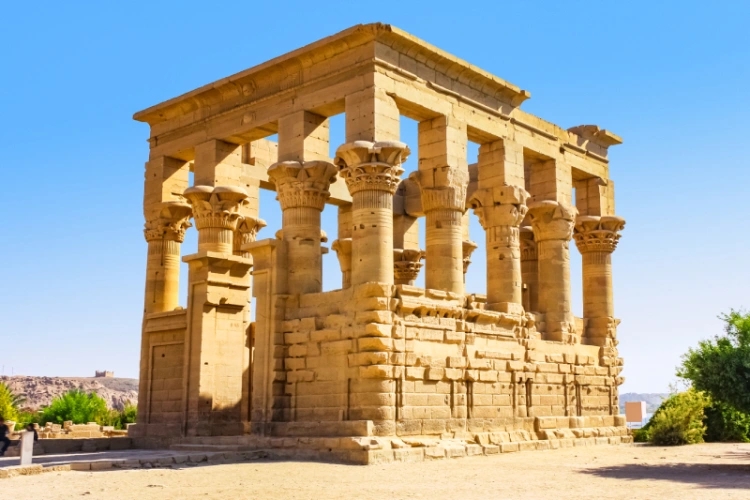

© Copyright 2025 Get Egypt Tour. All rights reserved.